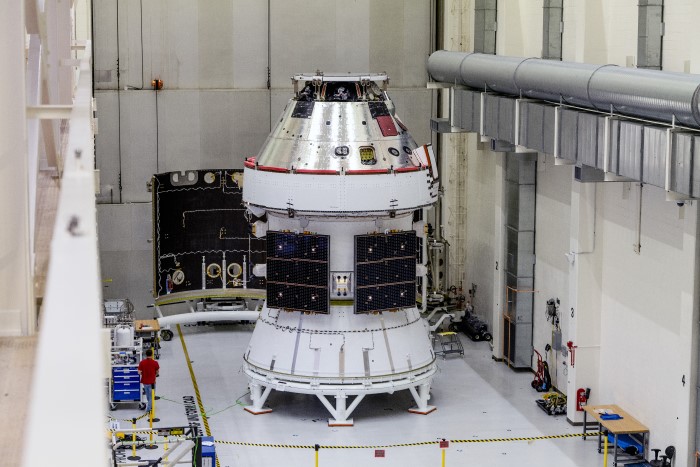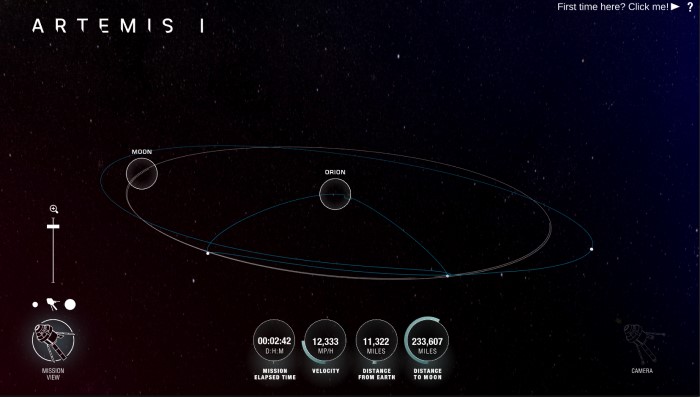It feels like for years now that we've been talking about NASA's new Artemis program. Because it really has been! But everything we've written about—from uniforms and a call for astronauts to new spacecraft—has always been about getting prepped for the program's missions.
Now, we're finally at the point where it's really, really happening. It's Day One of Artemis I. The first mission!
Er, almost.
Sadly, an issue with one of the four rockets of the SLS (Space Launch System) means that this morning's launch has been postponed. The next possible window (safe moment of launch) should be this Friday, September 2.
The launch of #Artemis I is no longer happening today as teams work through an issue with an engine bleed. Teams will continue to gather data, and we will keep you posted on the timing of the next launch attempt. https://t.co/tQ0lp6Ruhv pic.twitter.com/u6Uiim2mom
— NASA (@NASA) August 29, 2022
But despite this minor setback, when it does happen, you will be able to follow (in real time!) the mission's main spacecraft, Orion, as it orbits the Moon.
First, let's get some of these names out of the way, because space missions are full of them!
What is Artemis, exactly?
The SLS craft during a test this past June. (Getty Embed)
Artemis is the name for the entire space program. This program's goal is to send humans back to the Moon for the first time in 50 years.
And unlike the first time around (the Apollo missions in the late 1960s and early 1970s), it is also looking to set up a lunar space station (Lunar Gateway) and a permanent base on the Moon.
The program will be carried out by a series of events called missions. It is not yet known exactly how many Artemis missions that there will be, but Apollo had 17.
What is Orion?

The Orion craft being built. Several versions will be built to carry out different missions in Artemis. (Wikimedia Commons)
Orion is the name for the small spacecraft that will eventually carry astronauts to the Moon and back. It is made up of a few units, but the main piece is the crew module, or capsule. This triangular shaped vessel is designed to carry up to six astronauts.
Orion is not powerful enough to leave Earth on its own. Instead, it is launched on board a massive, four-rocket craft called the Space Launch System. After leaving Earth, it detaches from the SLS and makes the rest of its journey on its own.
So astronauts are going to the Moon now?
Not quite yet. Artemis I is an uncrewed test mission.
The chairs will be filled with three mannequins ... and a Snoopy stuffy! But these mannequins will be set up with numerous sensors to measure the conditions inside the craft during its journey. This way, NASA will know what the astronauts can expect during their mission (the future Artemis II) and whether any adjustments need to be made.
How do we follow Orion?

The AROW site will give users the ability to see all kinds of data from the launch, as well as cool facts from the original Apollo missions. (NASA)
And now the big news ... following Orion and Artemis I!
Even without humans on board, this is a big deal. NASA knows this, so they have set up AROW, the Artemis Real-time Orbit Website. You can visit it here.
During Artemis I, Orion will orbit Earth briefly, then head on its four-day journey around the Moon. After this is complete, it will splash down on Earth (meaning it will land in the ocean, where it will be retrieved).
As you follow the mission on AROW, NASA has promised that "users can follow AROW to see where Orion is in relation to the Earth and the Moon and follow Orion’s path during the mission. Users can view key mission milestones, and characteristics on the Moon, including information about landing sites from the Apollo program."
Frankly, it all sounds amazing to us! Here's hoping that the rescheduled launch on Friday goes off without a hitch!
 A screenshot preview of NASA's new AROW website, which allows you to follow the upcoming mission in real time. (NASA)
A screenshot preview of NASA's new AROW website, which allows you to follow the upcoming mission in real time. (NASA)









